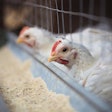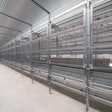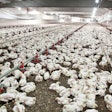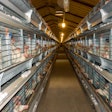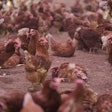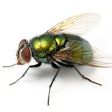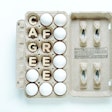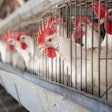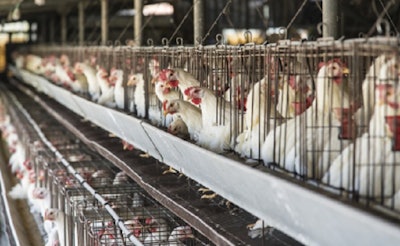
Much of the U.S. egg industry is gradually transitioning to cage-free housing for laying hens. Good pest management is an important part of an egg farm’s food safety program.
Egg Industry Insight asked pest control experts at Liphatech, MGK and Motomco for advice on things egg producers should consider if they are transitioning operations from cage to cage-free housing.
This is part one of a three-part series and focuses on how the structural design of cage-free houses can impact pest control programs.
Q1: Many layer farms are tearing down existing buildings with cages and constructing new cage-free housing on the old pad. Are there any recommendations that you have for site preparation that might impact future rodent and insect control on the site?
All three companies explained the importance of removing trash or organic material leftover from previous flocks to prevent pest attraction. Baiting pests during the initial construction process was suggested.
“By removing organic matter, you are not only reducing conducive conditions that lead to fly and insect pest issues, but you will also be physically removing any insect eggs and immatures that may be present,” stated Cassie Krejci, technical specialist, MGK. “Agricultural pests, such as beetles and weevils, can also be an issue when new poultry houses are built on former cropland. Applying a long-lasting insecticide to the ground prior to construction can help mitigate these pests.”
Similarly, Jason Price, national technical support manager, Liphatech, stated, “During demolition, be sure that there is not a lot of construction trash and harborage being left piled up for periods of time. This will house rodents and insects. If not, all houses are being demolished in a timely manner, then the houses still standing whether empty or populated, will need to be baited and monitored closely to keep migrating rodents from repopulating from the demoed houses to the standing houses.
“Older buildings are particularly susceptible to rodent infestations, so the process of tearing them down can provide a lot of disruption to existing rodent populations, which could lead to movement into other areas of the operation,” explained Andy Schoenherr, senior product manager, Motomco. “With any new construction, we always recommend keeping a 3-foot sterile barrier around the outside of the building, generally crushed rock or some other inorganic material that won’t attract rodents. New construction is also an excellent time to invest in new, clean bait stations.”
Q2: Do you have any specific design recommendations for the new buildings that will be constructed?
Minimizing the size and number of entry points using a variety of methods was recommended by all three companies.
“As new buildings are erected, particular attention should be paid to making sure that all possible points of entry are sealed. Flies often use doors and vents to enter; fans and plastic curtains can be installed to reduce their ability to fly inside poultry houses,” explained Krejci. “Rats and mice do not need an opening more than ¼ - ½” to enter a space, so making sure that near-ground openings are sealed is important (for example: plumbing penetrations and door sweeps).”
Schoenherr described that pest interaction with multiple bait stations will reduce prevalence, no matter how many entry points you have.
“While the single-entry point is helpful for Biosecurity and reducing foot traffic, it presents challenges for rodent control since there are fewer exterior walls and opportunities to intercept rodents with baiting or traps,” Schoenherr said. “Often rats and mice can have free movement across different barns and multiple floors without interacting with any control measures. If you’re using a dutch entry design, you may need to be more creative or flexible with how you apply bait.”
Concrete housing was recommended by Price to create a tight house that has minimal entry points.
Price stated, “from the pad up, the first 6 feet of walls should be solid concrete as this will help to keep buildings solid & as rodent proof as possible. However, as the building settles in the years over time it will crack and provide an opportunity for rodents to make their way inside. As far as construction you just would want a house that is tight and has minimum enter points for the rodents to enter from the exterior to the interior.”
Q3: Do you have any recommendations regarding the design, construction, and management of manure storage facilities on the farm that can help reduce rodent and insect numbers?
According to all three companies, setting up the process flow to easily separate manure from the production areas is a critical step in reducing pests.
“It can be beneficial to put litter barns and manure stacking sheds as far from poultry houses,” Krejci stated. “By separating the manure from the commodity (birds), you can reduce insect pressure on production facilities. The key to fly control in manure facilities is to keep the organic matter as dry as possible and fans are the most efficient way to accomplish this. Installing fans throughout pit areas can dry manure to the point that it is unattractive and uninhabitable by house flies, which reduces overall population numbers.”
Schoenherr added, “In newer facilities manure is belted and conveyed out, which can create an entry point that attracts rodents. Baiting can be done in and around manure sheds, but you have to be careful depending on where that manure is eventually going, especially if it’s considered organic fertilizer.”
“The manure storage being as far away from the production area of course is best,” suggested Price. “I also see having manure hauled off site as often as possible would help drive rodent populations down due to eliminating a harborage for the rodents and insects to live in.”







